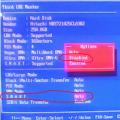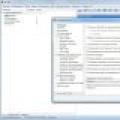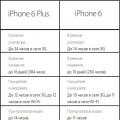Inspired by recent articles about making cases for flash drives with my own hands, I decided to take a risk and test the patience of Khabrovsk residents. The desire to make a body appeared a long time ago, but never got around to it. And so, armed with rosewood, mahogany, sandpaper, a file and a ruler, I assembled the body over the course of 4 evenings.
Below the cut is a description of the process.
A small block of rosewood was used as a blank: 
Due to the small thickness of the workpiece, it was decided to make the body in the form of a coffin with a lid: 
While working, I took a smaller flash drive: 
Trying on a glued body: 
The flash drive is held in place by cold welding deep inside the case. At the ends of the body and lid there are mahogany inserts: 
Gluing the insert to the main part of the cover: 
After the cover has been glued, it is necessary to bring it to a common base with the flash drive body: 
Result of roughing with a file: 
After this comes the tedious sanding phase. Four sheets with roughness from 400 to 1200 were used. Each sheet was processed two to three times. In between, the body was moistened with a damp cloth in order to lift the smoothed wood fibers: 
Body ready for painting with water-based varnish: 
After painting, the body was placed under a glass to prevent dust from sticking: 
Due to the fact that the first layer of varnish is absorbed into the wood, the body remains almost matte: 
We sand with sandpaper, cover with a second layer, polish with a soft cloth, cover with a third layer, polish and get the final result: 
Thank you for your attention!
It always looks bright and unusual, especially if it is a flash drive in a wooden case. However, this will require a lot of time and effort, but believe me, the result will be worth it. In order to make an original flash with your own hands you will need: three boards, a sharp knife, a cutter, wood and metal drills, a needle file, a file, epoxy resin and super glue.
DIY case for a flash drive made of wood
First you need to cut three boards that will be larger in size than the board from the flash drive. One board should be made from a different type of wood from the other two - this will give the craft an interesting and stylish look.

In the end, this is what your three blanks should look like.
Now you need to make a hole in the central plate into which the flash card should be secured. The hole should fit very well, and its edges can be coated with super glue.

Now you need to make a hard layer so that the flash drive does not break under significant physical activity. For example, it often happens that flash drives simply break out of their plastic cases, then what can we say about wooden ones.


A ruble coin is perfect for this and needs to be thoroughly cleaned with sandpaper. (Almost polish). Then, using epoxy resin, we glue the metal blank to the wooden body. In advance, of course, using a drill and a file, we make a hole in the coin into which the USB connector will go.

You should end up with a “rough” flash drive like this, which will still require a lot of work. In the same way, following the above instructions, you should make a lid for your designer craft. Please note that after all the operations performed, the craft still does not look stylish.

In order for the author’s flash drive to acquire a truly “saleable appearance,” the workpiece must be carefully processed with a file. After this, the surface can be varnished (or you can leave the natural wood coating intact). Agree that such a craft will be a truly original accessory. I bet that you will not find such a flash drive in anyone’s possession.


Many articles on many resources are devoted to the production of wooden flash drives. The materials for them are mainly fairly common wood species - birch, pine, beech, etc. But in our century, it has become much easier to get African wood than 10-15 years ago, so there is much more room for creativity and imagination of ordinary Russian people.
So I had the chance to get several exotic pieces of wood, among which were paduk (a kind of red-orange fiery wood) and Karelian birch, unfortunately, not of a very high grade. Having estimated the future dimensions of the flash drive, we cut off a plate from each block.



So, we decided that it would be a three-layer sandwich with 4 gigabytes of filling. Take the core and remove the excess. To begin with, carefully drill it out, then use a jigsaw to saw through the jumpers between the holes, and then use needle files to sharpen it to the point where the flash drive fits effortlessly into the resulting frame.


Pay attention to the small steps in the frame - this is necessary so that the flash drive does not dangle inside. Paduk is a fairly strong wood, but too thin lintels often break and split along the grain, so you need to work very carefully. In addition, dust from the wood of many exotic trees is a strong allergen, so I strongly recommend using a respirator when working with valuable wood species. Otherwise, your nose starts to itch very quickly, and this, as many know firsthand, is a sign that contributes to the delay of modding projects and other consequences.


I would like to say the following a little about Karelka: although it is wood that does not chip easily, chipping is still possible in small areas, so you need to work with the utmost care. We first select the wood with a semicircular cutter, and then trim it either with a needle file or with a straight cutter. The wood is very dense and difficult to cut, so be careful with your fingers.
Having cut and fitted the overlays from the frame, we inspect everything one last time and glue it together with Moment-Joiner glue. We lightly clamp the resulting sandwich in a vice and wait for the glue to dry completely.

Next we move on to the insertion between the flash drive and the cap. It has not only an aesthetic function, but also a practical one: with a brass plate, the flash drive is more resistant to breakage, which is important when it is actively used. There have been cases when flash drives were broken out of system units by foot or by more insidious objects. After such incidents, the wooden hulls cracked into splinters. So, we take a brass (with a ribbed edge, pardon the pun) 50-kopeck coin and carefully sand it on both sides with sandpaper.


Then we paint the coin with a marker so that the marks are more visible, and with an awl we draw the outline of the future hole. It turns out to be a non-standard rectangular shape.
In the next step, we drill out the middle of the hole with a four-millimeter drill, and grind the rest with a needle file. Please note that one file is sharpened on both sides to fit the width of the USB connector. This is necessary to ensure that the corners are as even as possible.




We grind evenly along the entire perimeter of the rectangle and constantly compare it with the original. Having achieved the required accuracy, we glue the resulting overlay onto epoxy resin, having previously polished it with GOI paste to a shine.

Well, while the epoxy is drying, it’s time to work on the cap. Take a USB extension cable and cut the connector. It should look like this.


Two overlays with recesses for the connector can’t wait to be glued into place.

While the flash drive doesn’t look particularly beautiful, it is original!


File in hand, and go ahead - achieve improved aerodynamics of the locomotive!

We gave the flash drive the necessary roundness and went for impregnation. We will soak it in Danish oil in several approaches.


As a result, we have such a flash drive.







A flash drive is a universal gift that will be useful in every home. You can record your favorite songs on it or take a selection of good photos. This is a great surprise for a birthday or other holiday. Everyone can fill it to their own taste, but you will learn how to turn an ordinary flash drive into a designer gift with your own hands from our master class!
Materials and tools
Today we will make a case for a flash drive with our own hands from wood using the following materials:
- a small wooden block (in our case it is a birch burl),
- flash drive with a collapsible casing,
— 2 metal bolsters for a flash drive (you can buy them, for example, here ),
- several different sanding papers,
— drill-mill,
- epoxy adhesive.
Instructions

The entire manufacturing process is quite simple and does not take much time. One product took about 2 hours, not counting the time the glue hardened.
This is a beautiful designer gift that can be given to a loved one or a stranger, a teenager or an adult. The wooden case is comfortable and pleasant to hold in your hands; this card is durable and at the same time unique.
Here's another interesting idea on how to make a flash drive from an ordinary lighter!
A peshka is a modern and very symbolic gift that everyone will appreciate. But the plastic cases of USB drives don’t look very presentable. If you want to make your gift pleasant not only from the point of view of the attention you give, but also aesthetically impressive, take the trouble and make a wooden case for the flash drive with your own hands.
Materials
To make a wooden case for a USB drive with your own hands, prepare:
- the flash drive itself;
- a block of wood of any species;
- wood glue;
- linseed oil or stain;
- hot glue;
- milling machine or hand tools for woodworking;
- saw;
- grinding machine;
- sandpaper.
Step 1. From the block you have, cut a piece 6 - 7 mm thick. The cross-section parameters in this case were 55 x 55 mm.

Step 2. After cutting the block, sand it thoroughly for further work.

Step 3. Taking into account the parameters of the plastic case of the flash drive you have chosen, sketch out its prototype on paper. Attach it to the cut piece of wood, and then start making a groove for the internal filling of the flash drive. The depth of each groove should be 2.4 mm.

Step 4. Cut part of the block with shaped grooves into two parts of the flash drive body. Sand them down.

Step 5. Disassemble the plastic casing of the flash drive, leaving only its internal components and the port.

Step 6. Place the flash drive circuit in one of the wooden case blanks. Secure it in place in the correct position with a dab of hot glue.

Step 7. Coat the wooden frame halves with wood glue. Clamp it and place it in a vise. Remove excess glue immediately.

Step 8. After the glue has completely dried, cut off the edges with a band saw, giving the body a streamlined shape. After this, sand the product. If desired, you can coat the body with stain or linseed oil to highlight the texture of the wood or shade it.





